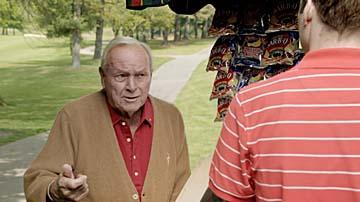 Finally.
Finally.During a news conference Wednesday at the U.S. Open at Merion Golf Club in Ardmore, Pa., USGA president Glen Nager unveiled a pace-of-play public-education campaign designed to combat one of the most significant threats to the game.
As the saying goes, the first part is admitting you have a problem. Nager noted four major factors affecting slow play: golf course design, golf course setup, player management and player behavior.
How bad is it? A recent study by the National Golf Foundation found that:
> 91 percent of serious golfers said they are bothered by slow play and say it detracts from their golf experience;
> more than 70 percent believe pace of play has worsened over time;
> half acknowledged that they walked off the course due to frustration over a marathon round of golf.
"We must stop simply complaining about poor pace of play and instead mobilize the golfing public to demand action on real potential solutions to the issue," Nager said in his prepared remarks.
The five new public-service announcements borrow the iconic line "While we're young" from the character portrayed by Rodney Dangerfield in the movie "Caddyshack," and feature the likes of Tiger Woods, Arnold Palmer, Annika Sorenstam, Paula Creamer, instructor Butch Harmon and film star/director Clint Eastwood.
"It's the language of golf and the language of golfers," Nager said. "It's a device designed to cut through golf's cultural conformity. The purpose of these spots is not to lecture but to relate; not to admonish but to wink."
Woods, in a news release, said: "Pace of play is a big issue. Rounds of golf take too long, and no one enjoys it. This campaign is lighthearted, but it also shows that we need to pick up the pace of the play."
The PSAs direct viewers to a newly created website (www.usga.org/whilewereyoung) that asks golfers and golf course managers to sign a pledge to improve pace of play. Those who do will be guided through an educational program developed in partnership with the PGA of America, LPGA and Golf Course Superintendents Association of America to provide accurate, practical information that offers potential solutions to reduce the amount of time it takes to play a round.
Nager said there is industry-wide concern, and that 20 golf organizations met this week to discuss ways to best unify the industry's approach to improving pace of play. For now, the USGA test center is spearheading an analysis of key factors known to influence pace of play and developing a pace-of-play model based on USGA-led research and quantifiable data, which Nager said should be complete later this summer.
The USGA-led initiative is the most aggressive effort yet to address concerns of slow play that plague the game.
"The reason we're launching this public-awareness campaign is because poor pace of play is driving recreational golfers from the recreational game," Nager said. "They have other things to do with their leisure time."
Nager concluded by underscoring the initiative's theme: "Let's fix pace of play 'while we're young.' "
- Adam Schupak, Golfweek

